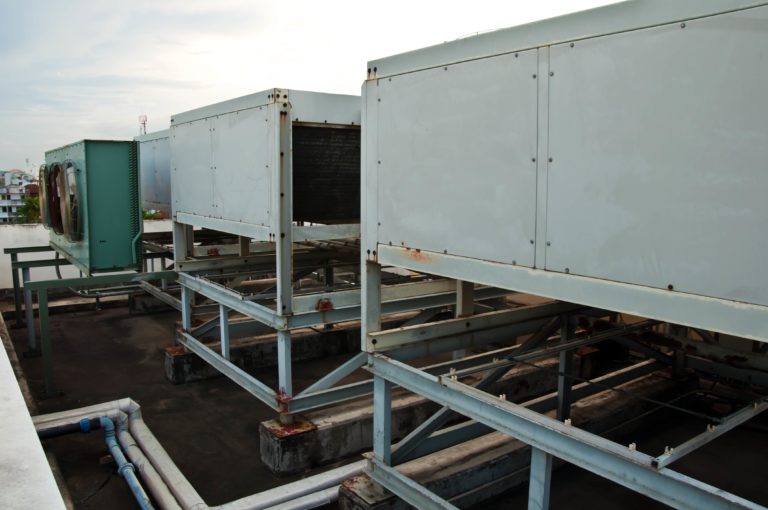Occupational Health in Indoor Air Environment
 Passive smoking at work reduces the quality of the indoor air. © Colourbox
Passive smoking at work reduces the quality of the indoor air. © Colourbox
Definitions
In this scientific area, there are several expressions that need to be clarified. The terms “indoor environment”, “indoor climate” and “indoor air” usually, and in this context, refer to indoor non-industrial exposure, including indoor environment and exposure inside transport vehicles.
“Indoor environment” refers to the combination of the seven factors; thermal-, atmospheric, acoustic, actinic (lighting and radiation), mechanical, psychological and aesthetic environments. “Indoor climate” on the other hand often refers to the combination of the five components; thermal, atmospheric, acoustic, actinic (lighting and radiation) and mechanical environments, not including psychological and aesthetic environments.
WHO guidelines for indoor air quality cover indoor settings in which the general population or especially susceptible population groups such as children, elderly, asthmatics etc. are potentially exposed to indoor air pollution . These include homes, schools, day care centres, public places such as libraries or institutionalized settings such as nursing homes.
Risk assessment of indoor air quality
As you may understand from all the factors and definitons above, a risk assessment of indoor air can be complicated. The issue has been much discussed the past years. The European Commission requested the Scientific Committee on Health and Environmental Risks (SCHER) to prepare an opinion on risk assessment on indoor air quality.
The general conclusions and recommendations states that:
“Indoor air may contain over 900 chemicals, particles, and biological materials with potential health effects. The composition and concentrations of the different components in indoor air vary widely and are influenced by human activities. Since it is not feasible to regulate all possible scenarios, prevention from possible health effects and protection of sensitive populations is best achieved by reducing exposure. As a consequence, the SCHER recommends that all relevant sources that are known to contribute should be evaluated. Such sources include tobacco smoke (passive smoking), any open fires including candles, building materials, furniture, pets and pests, use of household products, as well as conditions that lead to the growth of moulds. Constructers, maintenance personnel and inhabitants should also be aware that appropriate humidity avoids annoyances and sufficient air exchange reduces accumulation of pollutants”.
Indoor air and health
Knowledge has accumulated concerning the effects on health caused by exposure to agents present in indoor air. Among these are infectious and irritative respiratory diseases, respiratory allergy (for example, to house dust mites, animal fur and dander), asthma, and mucous membrane irritation. However, there is not a clear establishment of causal mechanisms. Often the impact of indoor work environment on health, well-being, and productivity is related to nonspecific symptoms related to being in certain buildings or rooms, usually in non-residential buildings such as offices, educational buildings and hospitals. These experiences were summarised at a meeting within WHO in 1982 and this combination of symptoms were denoted as “Sick Building Syndrome”, SBS. It is typically non-specific symptoms, usually perceived to be related to the indoor environment in non-industrial buildings as they improve, or disappear, when the affected person is away from the indoor environment. Symptoms that have been associated with low quality of the indoor air are various non-specific symptoms from eyes, nose, throat, skin and general symptoms including headache and tiredness.
Advice on indoor air environment
The indoor air environments are complicated to study and evaluate. The amount of dust and chemicals involved in such exposures are very low. The perception of the situation is clearly influenced by the workers themselves. The important thing in office environments is to listen to the workers, and to hear what type of problems they experience.
– No smoking indoors
– Regular staff meetings
– Regular workplace inspections
– Quick follow-up of problems disclosed
Moisture in buildings
 Parts of the new hospital had a flat roof, and the rain ended up as a pool of water on the roof top. Moisture entered the walls. ©Turid Andreassen
Parts of the new hospital had a flat roof, and the rain ended up as a pool of water on the roof top. Moisture entered the walls. ©Turid AndreassenThere are four main sources for ‘‘dampness’’ and moisture in buildings:
1. Leakage of rain and snow into the building construction or moisture from the ground.
2. Moisture from humans and indoor activities, e.g. cooking, bathing, human expiration, humidifiers, etc.
3. Moisture within building materials and constructions from the time of building due to lack of protection against rain and snow, or due to insufficient time for drying out, e.g. humidity in concrete floors.
4. Water leakage from e.g. pipes, flooding and other types of accidents.
Legionella disease
 Cooling towers are a common source of Legionella outbreaks. © Colourbox
Cooling towers are a common source of Legionella outbreaks. © ColourboxPrevention
- Warm water should have a temperature of 70 degrees of Celsius and there should be routines for flushing the pipe systems regularly.
- Once a year shower heads etc. should be disinfected.
- Companies using cooling towers should have technical measures that prevent microbiological growth and proper maintenance and control routines.
- Companies with air conditioning and ventilation systems must be aware of the problem and control and clean the relevant pipes and equipment regularly.
Suggested reading for interested: Fact sheet no. Legionellosis from WHO, 2014
Share this
Occupational Health in Developing Countries

Occupational Health in Developing Countries


Reach your personal and professional goals
Unlock access to hundreds of expert online courses and degrees from top universities and educators to gain accredited qualifications and professional CV-building certificates.
Join over 18 million learners to launch, switch or build upon your career, all at your own pace, across a wide range of topic areas.
Register to receive updates
-
Create an account to receive our newsletter, course recommendations and promotions.
Register for free







